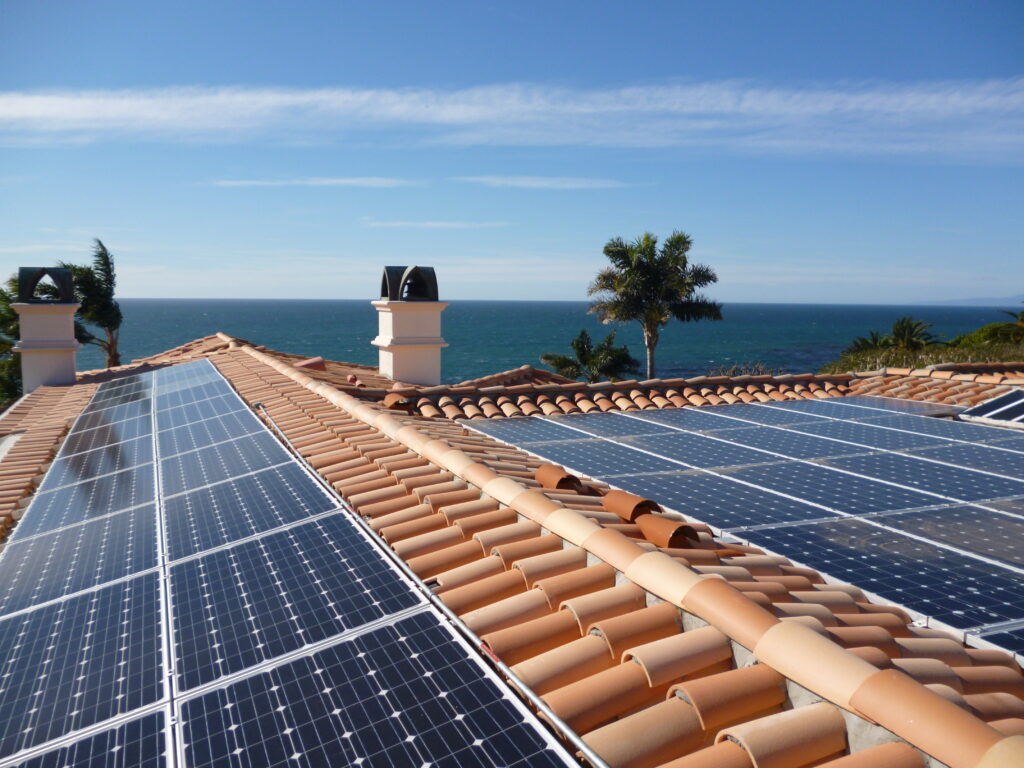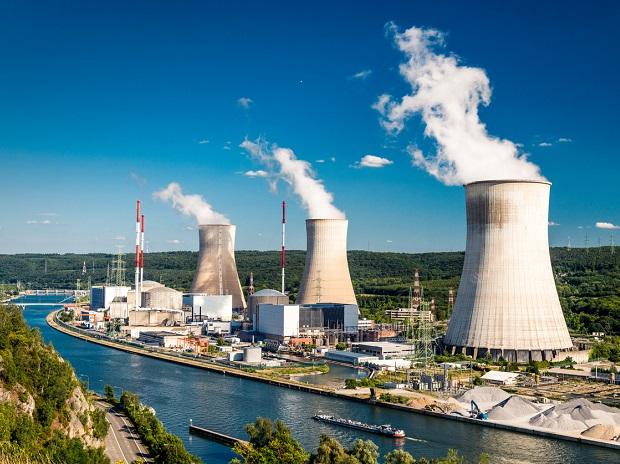The rubber continues to hit the road, or the ditch, when it comes to saving us all from global heating by 2050, this time putting skid marks across President Biden’s Energy Department’s announcement that the United States should get nearly half its power from solar by 2050. Yeah. And the other half from unicorns. But alas wishes are not horses. And indeed the New York Times in reporting/cheering this announcement conceded up-front that “The department’s analysis provides only a broad outline, and many of the details will be decided by congressional lawmakers.” Unless they’re not. Because if anyone knew what the details were on a workable plan, they’d have told us long ago.
The Times story claimed that “The Biden administration on Wednesday released a blueprint showing how the nation could move toward producing almost half of its electricity from the sun by 2050 — a potentially big step toward fighting climate change but one that would require vast upgrades to the electric grid.” But block that metaphor, because without details it’s not a “blueprint”. It’s a fantasy.
The story went on to concede that “There is little historical precedent for expanding solar energy, which contributed less than 4 percent of the country’s electricity last year, as quickly as the Energy Department outlined in a new report. To achieve that growth, the country would have to double the amount of solar energy installed every year over the next four years and then double it again by 2030.” Just that? And for those who remember that parable about the guy getting one grain of rice on the first chessboard square, two on the second and so on, what they’re describing is actually a 32-fold increase in the rate of installation, muffled by talk of mere doubling.
Apparently we must, because scientists say. “Such a large increase, laid out in the report, is in line with what most climate scientists say is needed to stave off the worst effects of global warming.” It is of course not the case that “most” or even “some” climate scientists have studied the costs and benefits of converting half the US electricity system to solar, but reporters say scientists say, so there.
Unfortunately just because you have to do something doesn’t mean you can do it, as anyone who couldn’t get their parachute to deploy would tell you if they could. And it gets worse on this alternative energy greenprint or whatever it is, because President Biden “also wants to add hundreds of offshore wind turbines” and he wants “half of all new cars sold to be electric by 2030. ” But, the article notes, it is not clear how hard his administration will push for these things.
No indeed. But to put it that way, to frame it as all about political will, is to miss the point entirely. What’s not clear is how in blazes anyone thinks the United States could possibly deploy that much solar capacity and hook it up to the grid.
It’s all just ripe for the picking in the world of political will: “the Energy Department said its calculations showed that solar panels had fallen so much in cost that they could produce 40 percent of the country’s electricity by 2035 — enough to power all American homes — and 45 percent by 2050.” But we can hardly expect the cost to remain that low with a 32-fold increase in demand over the course of a decade, especially as it will put appalling pressure on the resources needed, and on the environment where they are produced.
The report does concede that it will cost a fortune, duh. “Getting there will mean trillions of dollars in investments by homeowners, businesses and the government. The electric grid — built for hulking coal, natural gas and nuclear power plants — would have to be almost completely remade with the addition of batteries, transmission lines and other technologies that can soak up electricity when the sun is shining and to send it from one corner of the country to another.”
Yeah, all you need is will. The notion is that political obstacles are the main issue because they are exogenous, driven by malice, stupidity, greed or a stew of the three. The idea that “political obstacles” might arise because people legitimately doubted that the measures could be implemented at all, let alone at tolerable cost, simply does not get considered.
NBC has the same problem. In another cheerleading piece on the subject it began “Solar power could provide nearly half of America's electricity by the middle of this century, the Biden administration said in a study released Wednesday as it tries to prove that its ambitious zero-emissions goal can be reached by then.” In fact it merely said it should. “The study … found that meeting the administration's climate change goals would require increasing the solar share of energy production to at least 37 percent by 2035 and then to 44 percent or more by 2050. Just 3 percent of the current electricity supply comes from solar power… President Joe Biden previously set a goal for U.S. electricity to be carbon-neutral by 2035 but had not spelled out what mix of clean energy sources would be needed to achieve it.” And now it’s just so easy, not to mention imperative. “‘We've got to listen to the scientists and economists and the national security experts. They all tell us this is code red. The nation and the world are in peril,’ Biden said. ‘That's not hyperbole. That is a fact.’”
No, actually it’s hyperbole. NBC doesn’t question it, any more than it questions whether the economists all tell us this plan makes any sense at all. Which it doesn’t. To be fair, it mentions the view of one professor at Cornell that “The vast majority of solar panels deployed in the U.S. are imported, predominantly from China, he said, adding, ‘If we ramp up this production, that will involve complicated geopolitical issues.’” But no engineering issues.
Until you actually try. An argument can be made, and was by Paul Driessen, that it would be better if companies put a firm halt to the whole ESG business including especially the E, because “Wind, solar and battery land and raw material requirements are astronomical. Onshore wind turbines require nine times more metals and minerals per megawatt than a modern combined-cycle gas power plant. One onshore 3-MW turbine foundation needs 600 cubic yards (1,500 tons) of concrete, plus rebar. Offshore wind requires 14 times more materials per MW. Just the 2,100 850-foot-tall offshore turbines (30,000 megawatts) that President Biden wants to install by 2030 would require 110,000 tons of copper, plus millions of tons of steel, aluminum, fiberglass, cobalt, rare earth metals and other materials. At an average of 0.44% copper in ore deposits worldwide, the copper alone would require mining and processing 25 million tons of ore, after removing 40 million tons of overburden to reach the ore bodies!”
Ugly, huh? But wait. “Add in materials for solar panels, more onshore and offshore wind turbines, backup battery systems, electric vehicles, transmission lines, and all-electric home heating and cooking systems – to run the entire USA, Europe and world – and the ‘green energy transformation’ would require hundreds of billions of tons of metals, minerals and plastics, trillions of tons of ores, trillions of tons of overburden, and thousands of mines, processing plants and factories. Nearly all these operations employ fossil fuels.”
Incidentally President Biden obtained a BA in history and political science, with a minor in English, before going on to get a law degree (76th in his class) after failing a class due to plagiarising. It is not very probable that he either does the detailed math or has a good intuitive grasp of it. And as Steven Koonin has discussed in Unsettled, those around him who do are not likely to risk their careers by pointing out such problems. But when it comes to this kind of project, while politics strides confidently to the plate at the outset, economics bats last.



I'm a retired electric utility planner in the US, and what I have never heard the greenies explain is how the plan described above can be implemented in the US POLITICALLY and legally. I know that it cannot happen from a practical engineering and cost perspective. But no one has ever addressed the political and legal aspects. The vast majority of electricity in the US is produced and delivered by private and public stock exchange companies. The utilities are regulated by the Federal Energy Regulatory Commission (FERC) in terms of grid reliability, except in Texas which is governed by the State-run Electric Reliability Council of Texas. Since solar and wind are not reliable, solar and wind require backup generation which 90% of the time is fossil. This back-up generation requirement is what makes solar and wind unaffordable (you not only need the solar and wind plants, but you also need to maintain the natural gas, coal, nuclear and battery plants to provide power when taxpayers need it when the sun doesn't shine). So who pays for all of this duplicative cost? That decision rests with STATE (not FEDERAL) Public Utility Commissions (PUCs). It is the responsibility of all state PUCs to protect the cost burden of utility ratepayers. Biden and the greenies want to increase the cost of energy to the poor and middle class (and the privately-owned utilities) through FEDERAL programs, but the STATE PUCs who regulate the prices charged to the poor and middle class want to keep prices low. The STATE PUCs also want to protect the financial viability of the utilities so that grid reliability is protected. This creates a FEDERAL versus STATE (rich authoritarian government versus the poor and middle class) dilemma. In Germany and Denmark, which have the highest electricity costs in the world, this dilemma was solved by supporting the rich politicians and rich greenies. The poor and middle class in Germany and Denmark freeze in the winter and swelter during the summer because they cannot afford the idiocy of the greenies and the uncompassionate, authoritarian dictates of the brainless politicians in those countries. The equally brainless politicians in the US, Canada, Australia and other countries are following in Germany's and Denmark's footsteps because they have zero grounding in history, economics or science.
Any road to transition from fossil fuels that doesn't significantly involve nuclear power (requiring the better part of a century) is a road that guarantees increased demand for fossil fuels for an extended time while ensuring increased energy poverty for the masses. The alternative is a return to a depopulated pre-industrial existence for those remaining on the planet. Wind and solar barely produce a positive return on energy, are sold environmentally and economically as if the grids didn't exist and where there is no such thing as life cycle analysis. Political sociopaths make lousy substitutes for electrical engineers.
“Add in materials for solar panels, more onshore and offshore wind turbines, backup battery systems, electric vehicles, transmission lines, and all-electric home heating and cooking systems – to run the entire USA, Europe and world – and the ‘green energy transformation’ would require hundreds of billions of tons of metals, minerals and plastics, trillions of tons of ores, trillions of tons of overburden, and thousands of mines, processing plants and factories. Nearly all these operations employ fossil fuels.”
All true, but missing the essential point that batteries require rare-earth metals that have a VERY limited supply. Lithium for instance. Where are all the raw materials going to come from in the first place. Also, batteries do not last forever - are they fully recyclable or will they be like wind turbine blades, rotting away somewhere? NO-ONE KNOWS!! Or they deny there is a problem - THAT IS THE PROBLEM!!